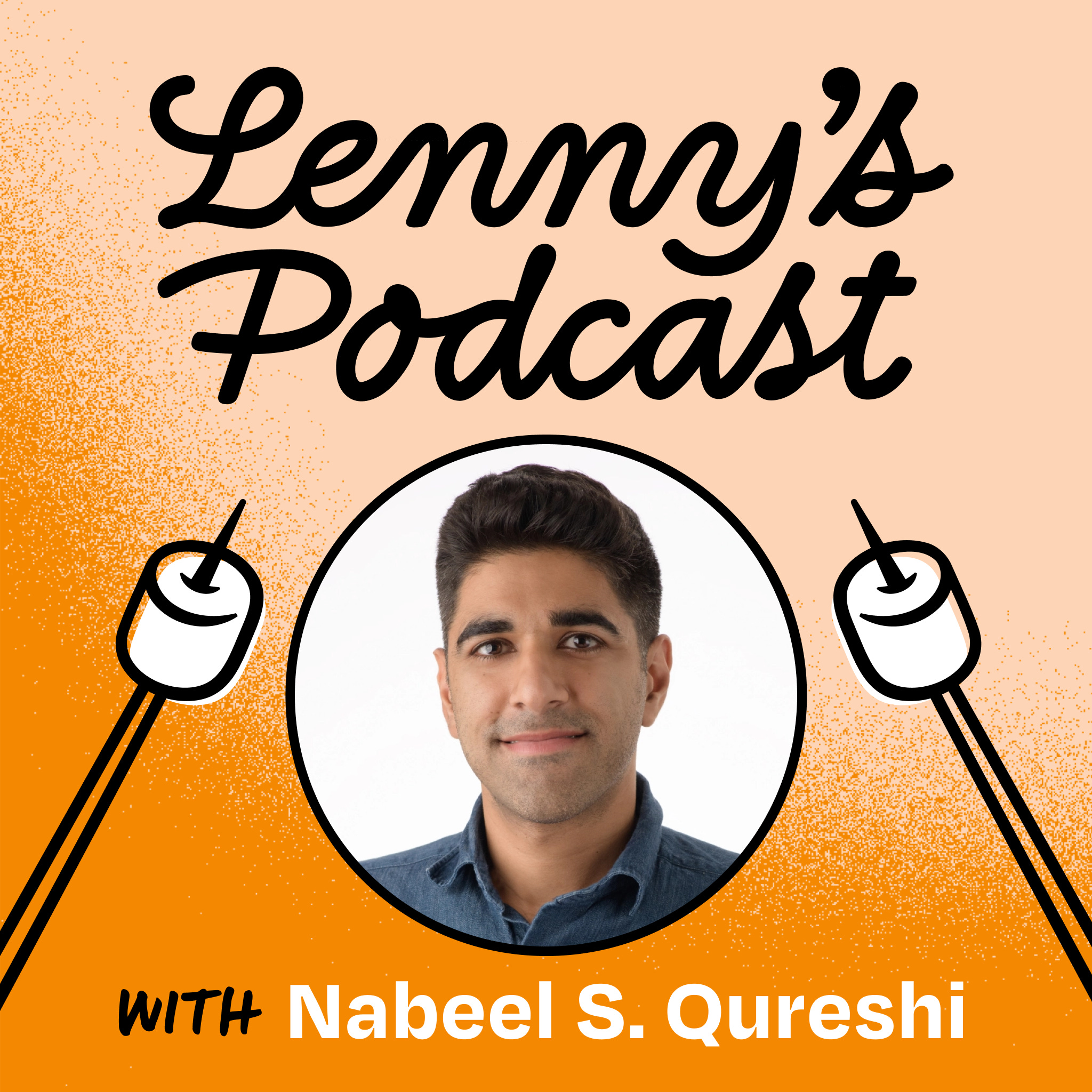
February 8, 2024 • 1hr 8min
Inside OpenAI | Logan Kilpatrick (head of developer relations)
Lenny's Podcast: Product | Growth | Career

Key Takeaways
- OpenAI's culture and operations:
- Values high agency and urgency in employees
- Uses Slack heavily for real-time communication
- Has a relatively small, focused research team
- Plans in quarters but remains flexible to adapt quickly
- Advice for building with AI:
- Focus on specific vertical use cases rather than general assistants
- Create new interfaces and experiences beyond just chatbots
- Leverage OpenAI's APIs to build custom solutions
- Tips for better prompting:
- Provide ample context - "Context is all you need"
- Be specific and detailed in your requests
- Consider adding a smiley face to potentially improve results
- Future developments:
- New modalities and interfaces for AI interaction
- More capable GPTs acting as agents
- Continued improvements in model performance and efficiency
Introduction
In this episode of Lenny's Podcast, host Lenny Rachitsky interviews Logan Kilpatrick, head of developer relations at OpenAI. Logan provides insights into OpenAI's culture, operations, and future plans, as well as advice for developers and companies looking to leverage AI technologies. The conversation covers a wide range of topics, from the recent leadership changes at OpenAI to the latest developments in AI interfaces and applications.
Topics Discussed
OpenAI's Recent Leadership Changes (03:55)
Logan discusses the dramatic weekend in November 2023 when OpenAI's board made sudden leadership changes, including the temporary removal of CEO Sam Altman:
- The events were surprising and stressful for employees
- There was a quick return to business as usual the following week
- "Everybody was just right back to it, which I love," Logan notes
- The experience may have brought the team closer together
Exciting Developments in AI Interfaces (08:20)
Logan highlights some of the most interesting recent developments in AI:
- New interfaces for AI interaction beyond traditional chatbots
- Products like TLDraw, which offers an infinite canvas experience for AI interaction
- Multimodal AI is expected to be a major trend in 2024
Leveraging OpenAI Tools for Business Efficiency (09:52)
The discussion turns to how companies can use OpenAI's tools to improve efficiency:
- Focus on vertical applications rather than general-purpose assistants
- Example: Harvey, an AI tool for legal professionals
- OpenAI is unlikely to compete directly in highly specialized verticals
Examples of Effective AI Use (13:04)
Logan and Lenny discuss real-world examples of AI applications:
- A GPT for writing ads for Facebook and Google
- A GPT for delivering and analyzing experiment results
- AI tools for planning and OKR setting
- A personal GPT for quarterly planning and consistency checks
Prompt Engineering (18:35)
The conversation delves into the concept of prompt engineering:
- Defined as the skill of effectively communicating with AI models
- Importance of providing context to get better results
- Parallels drawn between prompting AI and communicating with humans
How to Write Better Prompts (22:12)
Logan offers advice on improving prompt writing skills:
- Provide ample context - "Context is all you need"
- Be specific and detailed in your requests
- Consider adding a smiley face to potentially improve results (though the effect may be small)
- Refer to OpenAI's prompt engineering guide for more tips
The Launch of GPTs and the OpenAI Store (26:05)
Logan discusses the recent launch of GPTs and the OpenAI Store:
- GPTs allow users to create custom versions of ChatGPT
- The store enables sharing and potentially monetizing custom GPTs
- Zapier's integration with GPTs is highlighted as particularly useful
- "Monetization when it comes to the store later this quarter, I think is going to be extremely exciting," Logan predicts
The Importance of High Agency and Urgency (32:10)
Logan emphasizes two key characteristics OpenAI looks for in employees:
- High agency - the ability to take initiative and solve problems independently
- High urgency - a sense of immediacy in addressing challenges
- "You can take on the world if you have people who have high agency," Logan states
OpenAI's Ability to Move Fast and Ship High-Quality Products (34:35)
The discussion explores how OpenAI maintains its rapid pace of innovation:
- Lack of institutional legacy barriers that slow down older companies
- Empowering employees to take action without excessive consensus-building
- Example: The quick development and launch of the Assistants API
OpenAI's Planning Process and Decision-Making Criteria (35:56)
Logan provides insights into OpenAI's internal processes:
- Focus on how initiatives contribute to the goal of achieving AGI
- Emphasis on reliability and robust experiences for customers
- Quarterly planning with flexibility to adapt to rapid changes in the AI landscape
The Importance of Real-Time Communication (40:22)
Logan highlights the role of Slack in OpenAI's operations:
- Heavy reliance on Slack for instant communication
- Enables quick coordination across teams and offices
- "So much of the company culture is like ingrained in Slack," Logan notes
OpenAI's Team and Growth (42:33)
The conversation touches on OpenAI's team size and growth:
- Last public number was around 750-780 employees at the end of 2023
- Continued rapid growth across engineering and customer-facing roles
- Research team intentionally kept small to maintain focus and efficiency
Future Developments at OpenAI (44:47)
Logan shares his perspective on upcoming developments:
- Expansion of ChatGPT's capabilities (voice, image generation, etc.)
- GPTs as a step towards more advanced AI agents
- Making AI more accessible to non-technical users through specialized tools
GPT-5 and Building Toward the Future (47:42)
The discussion addresses expectations for GPT-5:
- Likely to be faster and more capable, but not a radical departure from GPT-4
- Advice to build products assuming incremental improvements rather than unrealistic expectations
- "Fundamentally the same problems that exist in the world are still going to be the same problems. You now just have a better tool to solve those problems," Logan explains
OpenAI's Enterprise Offering and the Value of Sharing Custom Applications (50:38)
Logan outlines OpenAI's B2B offerings:
- API access for building custom applications
- ChatGPT Enterprise with features like SSO and higher usage limits
- Ability to share custom GPTs and prompts within an organization
New Updates and Features from OpenAI (52:30)
Logan discusses recent updates to OpenAI's products:
- Improved GPT-4 Turbo model with reduced "laziness"
- Third-generation embeddings model with better performance and lower cost
- Significant improvements in non-English language performance
How to Leverage OpenAI's Technology in Products (55:09)
Advice for product managers and founders on using OpenAI's technology:
- Focus on creating new experiences beyond traditional chatbots
- Build core product experiences from the ground up with AI integration
- Consider how to take existing use cases to the next level with AI capabilities
Encouragement for Building with AI (58:26)
Logan offers encouragement to those interested in building with AI:
- "For people who have cool ideas that they should build with AI, this is the moment," Logan emphasizes
- Urges developers to reach out if they need help getting started
- Highlights the need for more AI-powered solutions in the world
Conclusion
The conversation with Logan Kilpatrick provides valuable insights into OpenAI's operations, culture, and vision for the future of AI. Key takeaways include the importance of focusing on specific use cases when building AI applications, the value of providing context when prompting AI models, and the exciting potential of new AI interfaces and experiences. Logan's encouragement for developers to start building with AI underscores the current opportunities in the field. As OpenAI continues to innovate and release new tools, the potential for AI to transform various industries and solve complex problems remains immense.









